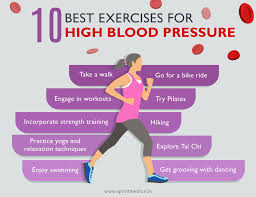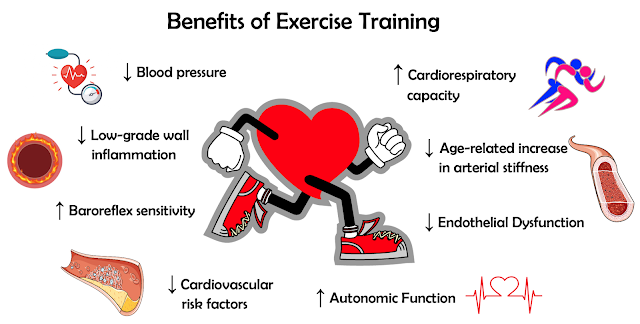Managing High Blood Pressure with Fitness
High blood pressure, also known as hypertension, is a common condition that increases the risk of heart disease, stroke, and other health issues. While medication can help manage it, regular physical activity is one of the most effective natural methods to lower blood pressure and improve heart health. This article will discuss how fitness can help manage high blood pressure, the types of exercises to consider, and tips for safe, effective workouts.
Understanding High Blood Pressure
Blood pressure measures the force of blood against the walls of the arteries. When this pressure is consistently too high, it can lead to serious health problems. Blood pressure is typically measured in two numbers:
- Systolic pressure: This is the top number, measuring the force when the heart beats.
- Diastolic pressure: This is the bottom number, measuring the force when the heart is at rest between beats.
Why Is High Blood Pressure Dangerous?
When blood pressure remains high for a long time, it can damage the arteries, leading to heart disease, kidney issues, and other serious conditions. Regularly monitoring blood pressure and managing it through lifestyle changes, like fitness and diet, is essential for long-term health.
How Fitness Helps Lower Blood Pressure
Exercise is a proven way to manage and lower blood pressure. Physical activity helps the heart use oxygen more efficiently, reducing the pressure on the arteries. Exercise also improves circulation, reduces stress, and helps maintain a healthy weight—all of which contribute to lower blood pressure.
Benefits of Exercise for Blood Pressure
- Improves Heart Health: Regular exercise strengthens the heart, helping it pump blood with less effort.
- Reduces Stress: Physical activity promotes the release of endorphins, which help relieve stress—a major contributor to high blood pressure.
- Weight Management: Being overweight or obese is a key risk factor for high blood pressure. Exercise helps burn calories and manage body weight.
- Improves Sleep Quality: Regular activity often leads to better sleep, which is essential for maintaining normal blood pressure levels.
Types of Exercises to Manage High Blood Pressure
Not all exercises are equally effective for managing blood pressure. Here are some of the most beneficial types of physical activity to consider:
1. Cardiovascular or Aerobic Exercise
Aerobic exercises are especially effective in managing blood pressure. They increase the heart rate, improve circulation, and help the heart use oxygen more efficiently.
Examples of Aerobic Exercise:
- Walking: A brisk 30-minute walk five times a week is one of the easiest ways to improve heart health.
- Jogging or Running: Ideal for those who are physically fit and looking for a more intense workout.
- Cycling: Whether on a stationary bike or outside, cycling is an excellent way to boost cardiovascular health.
- Swimming: A low-impact exercise that provides a full-body workout while promoting heart health.
2. Strength Training
Strength training helps reduce body fat and increase lean muscle mass, both of which can help lower blood pressure over time. However, it’s essential to avoid straining or lifting extremely heavy weights, as this can temporarily raise blood pressure.
Examples of Safe Strength Training Exercises:
- Bodyweight Exercises: Squats, lunges, and push-ups are effective for building muscle without requiring extra weight.
- Light Weightlifting: Using light weights or resistance bands can strengthen muscles without putting too much strain on the heart.
- Circuit Training: Alternating between strength exercises with little rest between sets keeps the heart rate up, combining the benefits of aerobic and strength training.
3. Flexibility and Stretching Exercises
Flexibility exercises like stretching, yoga, and tai chi may not directly lower blood pressure, but they help reduce stress and improve range of motion. This makes other exercises safer and more effective.
Benefits of Flexibility Exercises:
- Yoga: Studies show that yoga can reduce stress and improve blood pressure.
- Tai Chi: This gentle, flowing form of martial arts can improve circulation, balance, and reduce stress.
- Stretching: Stretching before and after workouts helps prevent injury and enhances the overall effectiveness of a fitness routine.
Exercise Guidelines for People with High Blood Pressure
Before starting any new exercise program, it’s important to consult a healthcare provider, especially if you have high blood pressure or other health issues. Here are some general tips to keep in mind:
Start Slowly and Progress Gradually
Begin with low-intensity exercises, such as walking, and gradually increase the duration and intensity as your fitness level improves. Jumping into a high-intensity workout can lead to injury or an unsafe rise in blood pressure.
Set a Regular Exercise Routine
Consistency is key for managing blood pressure. Aim for at least 150 minutes of moderate-intensity aerobic exercise each week. This can be broken down into 30 minutes a day, five times a week, or even shorter sessions throughout the day.
Monitor Your Blood Pressure
If you have high blood pressure, it’s essential to monitor your levels before and after exercise. Avoid exercise if your blood pressure is very high and consult your doctor for guidance.
Stay Hydrated and Avoid Overexertion
Dehydration and overexertion can lead to a temporary increase in blood pressure. Make sure to drink water before, during, and after exercise and listen to your body. Take breaks when needed, and avoid pushing yourself too hard.
Warm-Up and Cool Down
Always start with a five to 10-minute warm-up to get your heart rate up gradually and end with a cool-down period. This prevents sudden changes in blood pressure that can occur when stopping exercise abruptly.
Additional Lifestyle Tips for Managing Blood Pressure
In addition to exercise, there are other lifestyle adjustments you can make to help keep your blood pressure in a healthy range.
Eat a Balanced Diet
A diet rich in fruits, vegetables, lean proteins, and whole grains can have a positive impact on blood pressure. Consider following the DASH (Dietary Approaches to Stop Hypertension) diet, which focuses on nutrient-dense foods while reducing sodium, processed foods, and added sugars.
Limit Sodium Intake
Excess sodium intake is a major contributor to high blood pressure. Avoid salty foods, processed snacks, and limit the amount of salt used in cooking.
Manage Stress
Chronic stress can contribute to high blood pressure. Try relaxation techniques like deep breathing, meditation, or spending time in nature to reduce stress levels.
Avoid Smoking and Limit Alcohol
Smoking and heavy alcohol consumption both raise blood pressure and put additional strain on the heart. Quitting smoking and limiting alcohol intake are critical for long-term health.
Get Enough Sleep
Poor sleep can lead to higher blood pressure levels. Aim for 7–8 hours of quality sleep per night to support overall heart health.
Conclusion
Managing high blood pressure through fitness is a powerful and natural approach that has many additional health benefits. Regular physical activity helps improve heart health, reduce stress, and maintain a healthy weight—all of which contribute to lower blood pressure. By incorporating a mix of aerobic, strength, and flexibility exercises, along with lifestyle changes like a balanced diet and stress management, you can take control of your blood pressure and support long-term health.
If you’re new to exercise or have any health concerns, be sure to consult your doctor before starting a new fitness routine. With consistency and dedication, fitness can become a valuable part of your blood pressure management plan.









